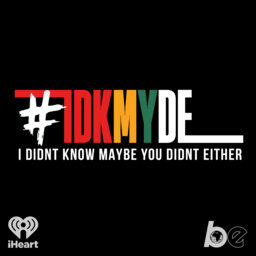IDKMYDE: NISSAN – National Museum of African American Music Tour
In this episode of #IDKMYDE, Bdaht walks you through some of his favorite exhibits at the National Museum of African American Music. He had the pleasure of visiting the museum during The Thrill of Possibility Summit in Nashville, TN! Together with Nissan, The summit connects HBCU students with leaders across the STEAM industry for mentorship, conversations on careers, branding, and networking opportunities that can lead to success post-graduation.
IG: @_idkmyde_
@BdahtTV
@blackeffect
One Nation under re groove, getting down just the funk COVID, what's happening beat out here? We're here to thrill. The Possibility Summit hosted by Nissan and the Black Effect Podcast Network and the National African American Museum of Music. I'm gonna show you my three favorite exhibitions. So we start in the wade in the water room. This room symbolizes hope. How you say, you got to remember man in the early sixteen hundreds, when the first enslaved individuals were brought to the United States, they had their own tribal music, they had their own sounds, they had their own religion, but by the time they got here, all of that was beaten out of them. So this music, it's a sound of hope. Growing up in the church myself, like I could have been out there in the streets, but Mama had me in the pews. So I can relate to the gospel music and the hope that it provides for individuals. But then we transition from hope to survival. After the Civil War, were met at a cross roads, in the words of our good brothers from Cleveland, meet me at the crossroad. See, this room was very important This was an introduction to a lot of things. One there was an introduction to black folks actually playing music that they wanted to play. See, up until this point, they were forced to play music just to entertain their overseers. But now it was a freedom in the music because at this time they were given freedom, but they weren't necessarily free. The only way they could express said freedom and said sadness and said happiness is in the music. That's what founded the blues. Up until that point, it was just thought that white folk would never like black folk music over there. That wasn't the case. See white folk love that blues so much that blues created country music as well as jazz as well as hip hop. See the Crossroads room. It interconnects communities. It's actual crossroads for different cultures. This is the one nation under a groove room. You did all jazz. It might be the smoothest room in the museum. You did, know what I'm saying, And it just shows how jazz was integrated into Black culture that eventually went onto the world. You even got white folk over there playing jazz music. They loved the jazz and did think about all the storms that were birthed from jazz. I mean you think Duke Ellington, Louis Armstrong, Ella Fitzjernal, Billy Holliday, Miles Davis, jazz music from ragtime and mentry shows to civil rights and bebop. You did what I'm saying. It's a blending of the cultures. I can't wait to see what's next in this place. This whole exhibit has made me want to just sing, dance. But this area is my space. Okay, this is where the radio jockeys used to be. You did what I'm saying to you. Big shout the Black Folk and radio. Big shout to the Black Effect Podcast Network. Big shout too, the Thriller Possibility Summit, and big shouts to National African American Museum Music right here in Nashville, Tennessee. I'm about to keep going around. If you get some free time, I think you should come check it out. It's pretty dog one dub w D I a signing. Okay, I didn't know. I didn't know.
 I Didn’t Know, Maybe You Didn’t Either!
I Didn’t Know, Maybe You Didn’t Either!


